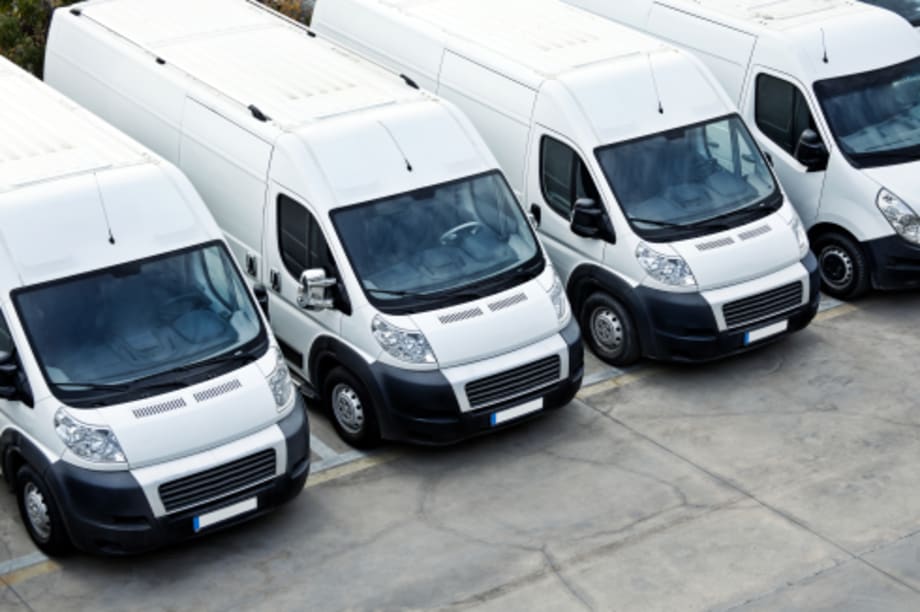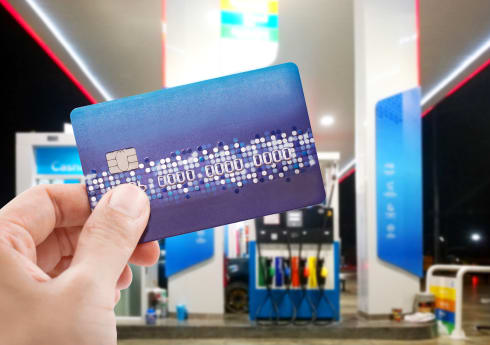What is Fleet Card Fraud? And How to Prevent It
Fleet cards can be a great help to reduce fuel costs, time spent on paperwork and to monitor spending. However, cashless fuel purchases can run the risk of fleet card fraud if steps are taken to prevent it.
Read our guide to understand the main types of card fraud, how to spot it and how to stop it now. Preventing fraud with suitable fuel cards can save your business time and unexpected costs.

What is fleet card fraud?
Fleet cards are a PIN-protected payment method that is an alternative to cash and credit cards for businesses. They are restricted to fuel or vehicle-related purchases.
Fleet card fraud is when these cards are used in an unauthorised manner, such as drivers refilling a personal vehicle instead of their work vehicle.
Types of card fraud
Fuel card fraud comes in many forms. To effectively prevent it for your fleet, you’ll need to understand the different types. The main three types of fuel card fraud are:
- Refilling personal vehicles: instead of using fleet cards as intended on work vehicles, fraud may be committed if someone attempts to fuel an unauthorised vehicle or put fuel into a container for personal use later.
- Sharing cards: a common type of fraud, card users may give their card to someone else to fill up an unauthorised vehicle.
- Syphoning fuel: this type of fraud happens when someone takes fuel out of an authorised vehicle and into unauthorised one.
How can I tell if someone has committed fuel fraud?
To find out if someone has committed fuel fraud using your fleet cards, check your online account. Read through the reports and details of each card use. Spotting overspending, incorrect fuel usage and more is easier when the numbers are right in front of you.
Signs of fuel card fraud
Common signs fleet cards are being used fraudulently are:
- Frequent vehicle refills: if a vehicle in your fleet has more refills than other vehicles with similar routes in your, it can be a sign of fuel theft where a driver is syphoning fuel into a personal vehicle.
- Mileage doesn’t match the costs: check your fuel card system and see if the card charges match the mileage. If a vehicle has low mileage but higher costs than expected, it can be a sign of fraud.
- Unexpected stations: if a station outside of the usual route appears on your system, this is a strong sign something has happened. Usually, this is a sign of fraud outside your fleet (e.g., the card has been stolen).
How to prevent fuel card fraud
Prevention is better than cure. Looking at reports manually is time consuming. But prevention is possible. Look for the following features in your fleet cards to reduce incidences of card fraud.

PIN-protected fleet cards
Allocate petrol cards to your drivers and supply a specific PIN code for each one. This gives you more control over your reporting system to see the usage of each card. PIN protection also makes more difficult to share cards or steal them as the user will need to enter the code.
Check purchase history online
Fleet cards that include a reporting system are a must. Use these reports to filter through each card and check the details.
The best systems give the full details of each transaction, including where the card was used, time, litres purchased, type of fuel bought, and the amount spent. Use these reports to manually check any suspicious activity.
Optional photo ID check
Some card providers may include the option to have an ID check included when drivers purchase fuel. When this feature is activated, cashiers won’t accept the payment until the driver has produced the required photo ID.
Using photo ID is best used alongside PIN protection as well for more security. This way, even if a driver accidentally leaks their PIN or loses their card, the fleet card can’t be used to purchase fuel by anyone else.
This is an optional feature you generally have to opt into, so check with your card provider to see if you can implement it.
Maximum spending limits
Setting limits on spending for every card in your fleet to limit the amount drivers can purchase at the station. This can prevent fuel card sharing and reduce loss if cards are stolen or lost.
The maximum spend limit can be set for a period of 24 hours, a week or more depending on the settings available. For example, you could adjust your settings to prevent drivers spending more than £100 MYR on fuel in 24 hours.
Set work time hours
Depending on your business type, your drivers may only be on the road at certain times. Your card settings can be changed so that they only work during work hours.
What if your fleet is on the road at different times of the day? Each card can have its own work hours setting, so you can edit each one manually to fit the set-up of your fleet.
Fast and easy card removal
Sometimes the best way to prevent fraud is to nip it in the bud once the suspicious activity has been discovered. If you suspect one of the cards on your account is being used fraudulently, remove or temporarily lock the card at the click of a button.
Raise awareness in your fleet
Ensure your drivers are aware about fleet card fraud and its consequences. Many thieves will look for PIN numbers over driver’s shoulders and even check vehicles for any notes where it may be written down or stored.
Train your drivers so they are aware of how to contact you if they believe their card has been compromised.
Get a fleet card system with alerts
Doing regular manual checks is good. Having alerts of suspicious activity, such as vehicles being used outside of work hours, is even better. We compare a range of fuel cards, including those compatible with telematics alerts to find the right system setup for your business.
Can telematics help to prevent fleet card fraud?
Yes. Vehicle trackers can give you visuals of your fleet, so any unexpected journeys or unauthorised refills can easily be found on the system.
Additionally, managers can set up geofences. These digital fences appear on the live map and alert you if vehicles leave or enter an area. If drivers enter an area outside of work hours, this will be flagged in the system.
This method can be faster than manual checks of fuel card systems but are best used alongside them for the best level of prevention. We recommend using a fuel card compatible with your telematics system to see all the important information in one system and ensure no suspicious activity is overlooked.
How to find the best fleet cards
Having a suitable fuel card for the fleet goes a long way to preventing fuel fraud. Look for customisable cards with good security features to adjust to your needs. Compare fleet cards now to see what deals you could get for your business.



